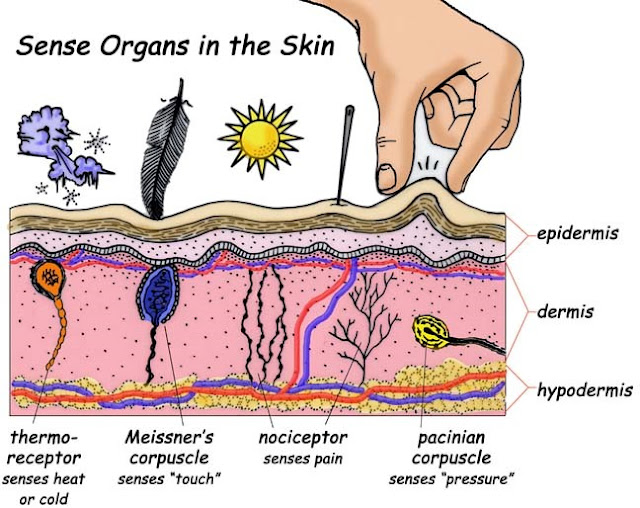
EHS 2110 HUMAN ANATOMY PHYSIOLOGY AND MICROBIOLOGY
INTRODUCTION
To equip students with the relevant biomedical knowledge to enable them to understand factors related to environmental health. Environmental Health practitioners should be knowledgeable of the causative agents of human (and animal originated) communicable diseases and their effects on public health in order to commission control measures.
COURSE AIM
HUMAN ANATOMY, PHYSIOLOGY AND MICROBIOLOGY is meant to demonstrate relevant biomedical knowledge related to environmental health in the control of communicable and non-communicable diseases.
COURSE OBJECTIVES
At the end of this course, students should be able to:
1. Outline functions of all organs of the human body
2. State the immune response, immune disorders and their consequences.
3. Describe the life cycle of selected parasites of medical importance, the pathogenesis of the diseases they cause and parasites using the appropriate microscopic techniques.
4. Describe the structure of bacteria and its growth
5. State the basic mechanisms of microbial pathogenicity and host resistance
COURSE COMPETENCIES
1. Explain functions of all organs of the human body
2. State the immune response, immune disorders and their consequences.
3. Draw the life cycle of selected parasites of medical importance
4. Draw the structure of bacteria
5. State the basic mechanisms of microbial pathogenicity and host resistance
COURSE MATERIAL
1. Human anatomy and physiology
1.1 Introduction to anatomy and physiology
1.1.1 The cell
1.1.2 Levels of structural organization
1.2.1 Skin
1.2.2 Hair
1.2.3 Glands
1.3.1 Structure of the skeleton
1.3.2 Bone formation
1.3.3 Bone growth, Joints
1.4 Muscular system
1.4.1 Types and function
1.4.2 Skeletal muscle
1.4.3 Cardiac muscle
1.4.4 Smooth muscle
1.4.5 Movement muscle
1.5 Nervous system
1.5.1 Organization of the nervous system
1.5.2 Histology of the nervous system
1.5.3 Physiology of the nervous system
1.5.4 Central nervous system
1.6 Special sense organs
1.6.1 Eyes
1.6.2 Tongue
1.6.3 Nose
1.6.4 Ear
1.7 Cardiovascular system
1.7.1 Blood, Blood vessels
1.7.2 Blood reservoir
1.7.3 Structure of the heart
1.7.4 Conduction system of the heart
1.7.5 Cardiac cycle
1.7.6 Physiology of circulation
1.8 Lymphatic system
1.8.1 Lymph
1.8.2 Lymphatic vessels
1.8.3 Lymphatic tissues
1.8.4 Lymphatic circulation
1.9 Respiratory system
1.9.1 Upper and lower respiratory tract
1.9.2 Respiration
1.9.3 Control of respiration
1.10 Digestive system
1.10.1 Oesophagus and stomach
1.10.2 Small and large intestine
1.11 Reproductive system
1.11.1 Male reproductive systems
1.11.2 Female reproductive systems
1.12 Endocrine system
1.12.1 Pituitary gland
1.12.2 Pineal gland
1.12.3 Parathyroid
1.12.4 Thyroid
1.12.5 Pancreas
1.12.6 Adrenals
1.13.1 Kidney
1.13.2 Bladder
1.13.3 Nephron
1.13.4 Urethra
2.1.1 Acute inflammatory reaction
2.1.2 Leukocytes, Complementary system
2.1.3 Non immunological defence mechanism
2.2 Cells of adaptive immunity
2.2.1 B-cells and their functions
2.2.2 T- cells and their functions
2.3.1 Interaction between innate and adaptive immunity
2.3.2 Escape strategies
2.3.3 Anaphylaxis
2.4.1 Hypersensitivity reactions
2.4.2 Auto-immune diseases, Immunodeficiency
2.4.3 Tumour immunology
3.1.1 Structure of bacteria and its growth
3.2 Bacterial pathogenesis and host resistance to infection
3.2.1 Basis of bacterial pathogenicity
3.2.2 Genetic concepts of pathogenicity
3.2.3 Host resistance to infection
3.2.4 Principles of serological diagnosis
3.3 Use of microbiology in public health
3.3.1 Microbiology of water, food and air
3.3.2 Infection control in hospitals and public places.
3.4 Technical methods in microbiology, related to water and airborne diseases
3.4.1 Sterilization and disinfection
3.5.1 Safety in the microbiology laboratory
3.5.2 Water microbiology
3.5.3 Cultivation, isolation and enumeration of bacteria
4. Medical parasitology
4.1 Pathogenesis of parasitic diseases
4.1.1 Etiology
4.1.2 Disease processes due to parasites
4.1.3 Immunity and immune responses to parasitic infections.
4.2 Protozoology
4.2.1 Haemoprotozoa (plasmodium and trypanosomes)
4.2.2 Intestinal amoebae, Intestinal flagellates
4.3 Helminthology
4.3.1 Nematodes
4.3.2 Trematodes
4.3.3 Cestodes
4.4 Laboratory work
4.4.1 Importance of laboratory examination
4.4.2 Identification and confirmation of infection
5. Virology
5.1 Structure of viruses, mutations and cross species reservoirs
5.2 Pathogenesis:
5.2.1 Enterovirus infections
5.2.2 Poliomyelitis
5.2.3 Measles
5.2.4 Aseptic meningitis
5.2.5 Ebola
5.2.6 Acute Viral Respiratory diseases
5.2.7 Psittacosis
5.2.8 Serious Acute Respiratory Syndrome (SARS)
5.2.9 Bird flue
5.2.10 Arthropod viral diseases (Dengue, Yellow fever, and West Nile fever)
6, Mycology
6.1 Mycoses physiology
6.1.1 Structure of fungi
6.2 Pathogenesis
6.3 Dematomycoses
6.3.1 Tinea pedis
6.3.2 Tinea cruris
6.3.3 Tinea corporis
6.3.4 Tinea capitis
6.4 Systematic mycoses
6.4.1 Actomycosis
6.4.2 Candidacies
6.4.3 Mycetoma aspergillus
6.4.4 Fusarium
6.5 Fungicides
6.5.1 Phenols and Cresols
TEACHING METHODS
Theory
• Lectures
• Group discussion
• Individual student presentations
• Reading assignment
• Practical laboratory sessions
Contact time: Total 140 hours
• Lectures: 112 hrs.
• Group discussion; Individual student presentations; Reading assignment; and Practical laboratory sessions: 28 hrs.
ASSESSMENT
Continuous Assessment (20% Tests, 10% Assignments, 10% Practical) 40% Final Examinations 60%
Prescribed books
1. Greenwood, D., Slack, R C B and Peutherer, J F (1998). Medical microbiology: Pathogenesis, immunity, laboratory diagnosis and control 5th Ed. Churchill Livingstone, Edinburgh.
2. Guyton, A C (2002). Textbook of medical physiology. 10th Edition
3. Tortora, G J and Grabowski, S R (2000). Principles of Anatomy and physiology. 9th edition. John Wiley and Sons, Inc, New York
4. J. Gordon Betts. OpenStax College. Peter Desaix. Jody E. Johnson. Edward W, Johnson. Oksana Korol. Dean Kruse. Brandon Poe. James Wise. Mark D. Womble. Kelly A, Young
5. OpenStax College, 2013 – Anatomy – 1349 pages
Recommended books:
1. Roitt, Bostoff, J. and Male, D. (1996). Immunology (4th Ed). Mosby, London
2. Marked, E K, Voge, M and John D J (1992). Medical parasitology. W. B. Saunders company, Philadelphia.
3. Peters, W and Gilles, H M (1998). A colour atlas of tropical medicine and parasitology 3rd Ed. Wolfe medical publications. Ltd. Berlin.
4. Thornton, H. (1970). Textbook of Meat Inspection, London, Baillier, Tyndal and Cassell
5. Bassett, H. W. (1995). Clay’s Handbook of Environmental Health, London, Chapman and Hall
6. Martin, C. R. A. Practical food inspection. H. K. Lewis and company
7. Mims, C A et al (1993). Medical microbiology. Mosby, St. Louis.
8. Gannons, W (2002). Medical physiology 21st Edition.









